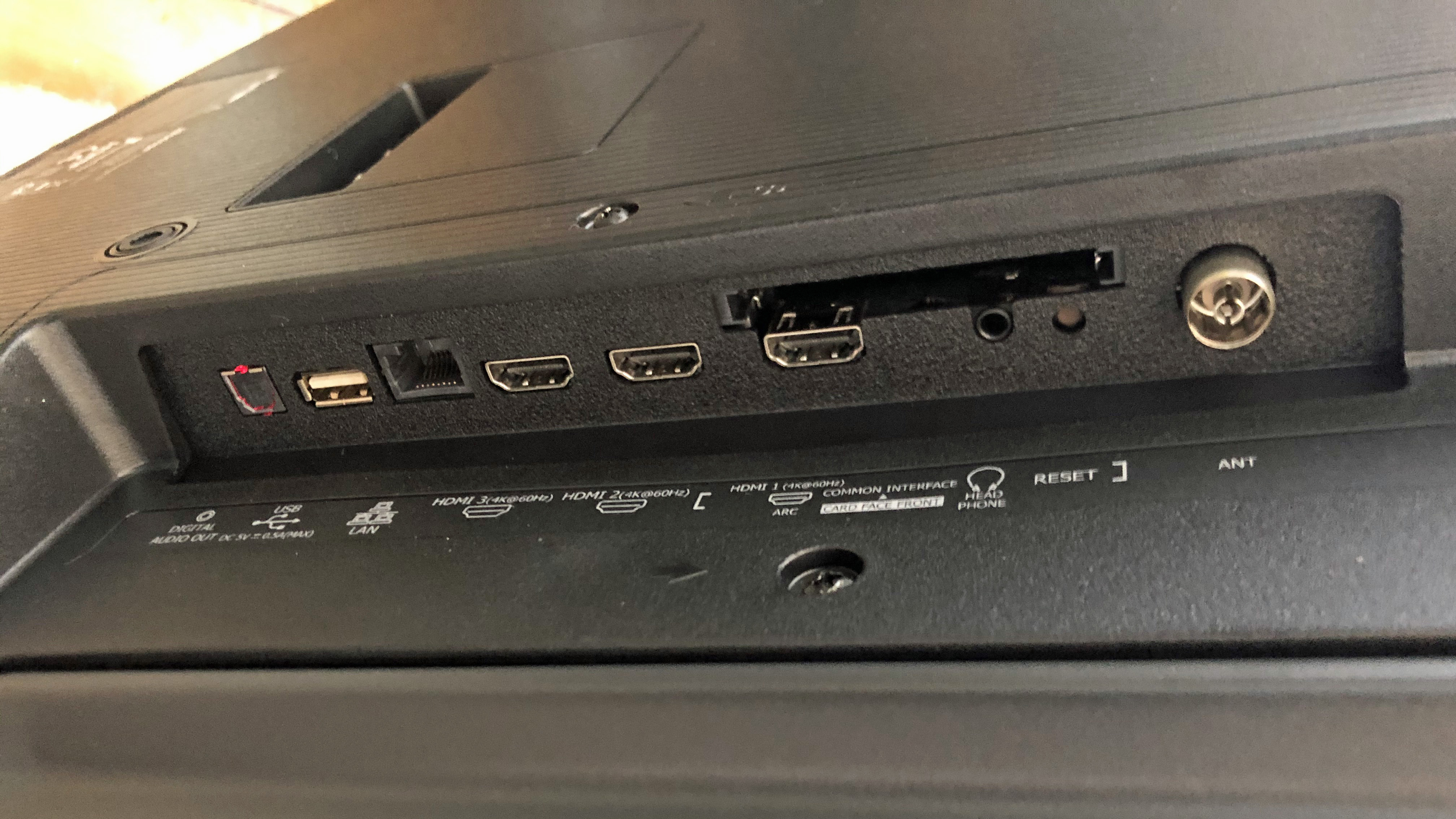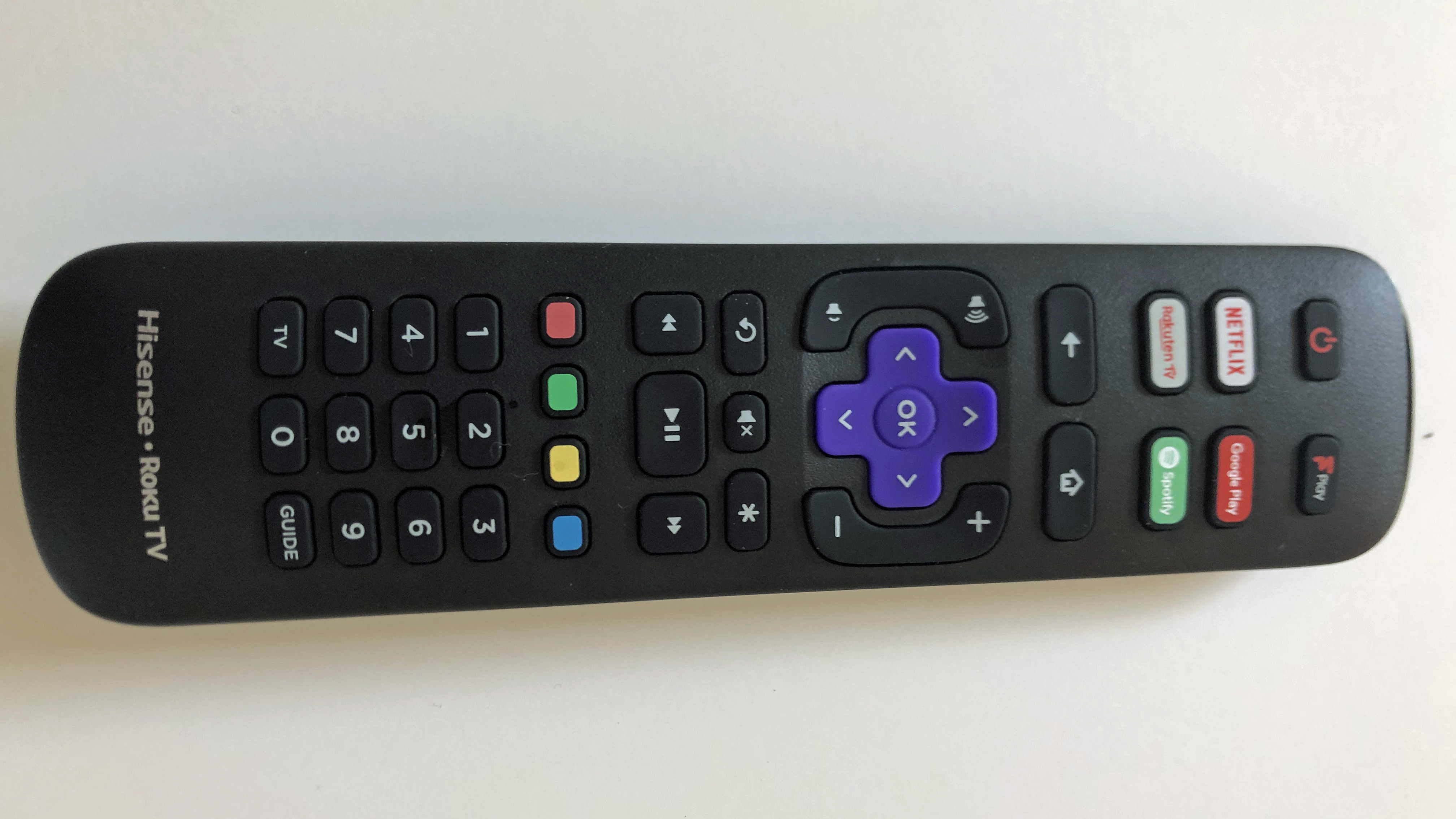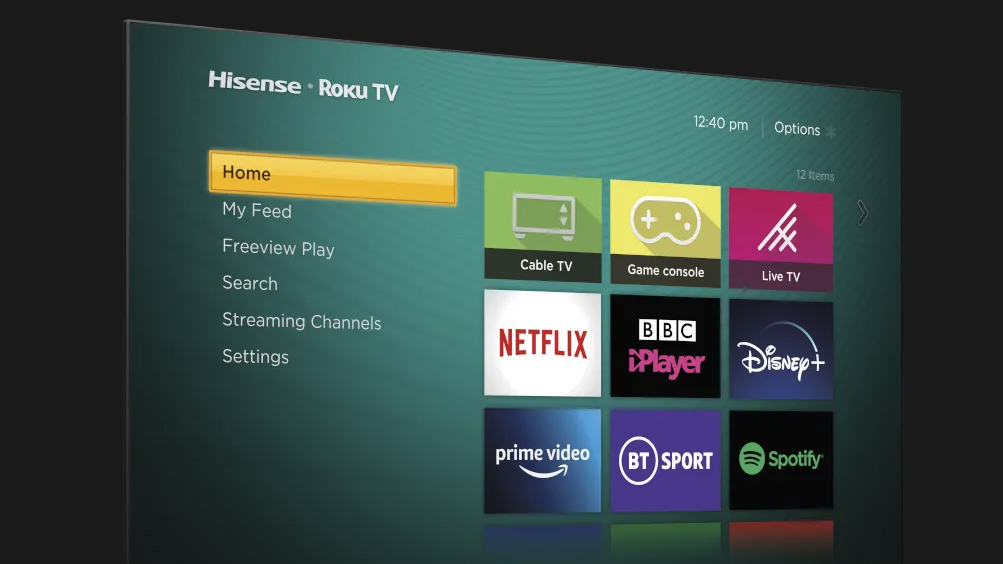TechRadar Verdict
The Hisense A7200G is a cheap 4K HDR TV, with some compromises. But if you can look past the poor audio and middling upscaling, it could prove quite the steal. Obviously spending more will get you better picture and (especially) sound performance – but then if you want a 50-inch 4K HDR TV from any other brand, you’ll be spending plenty more anyway.
Pros
- +
Very decent native 4K images
- +
Splendid Roku TV interface
- +
Clean, discreet design
Cons
- -
Motion issues
- -
Upscaling has its limits
- -
Sounds flat-out poor
Why you can trust TechRadar
Even by Hisense’s standards, delivering a 50-inch 4K HDR TV with full-array backlighting and a Roku TV smart interface for just £349 is no mean feat. Yes, the backlighting makes the chassis bulge somewhat and no, there’s no dynamic metadata HDR here – but despite this, and the asthmatic nature of the TV’s sound, there’s an awful lot of value on display.
Given some native 4K content, and consequently the best opportunity to shine, the Hisense is capable of genuinely impressive results. It controls its backlighting well, creates strong contrasts, carries plenty of detail along with it and has a wide colour palette to call on. Only periodic struggles with motion-tracking, and pretty much constant sonic toil, lets the side down.
If you lower the quality of the incoming signal and the Hisense’s bad points will eventually start to outweigh its good ones – but that’s to miss the point a little. Align your expectations to the asking price and there’s every chance you’ll be pleasantly surprised by the Hisense A7200G.
Price and availability
- 43-inch, 50-inch, 55-inch and 65-inch models available
- Aggressive pricing
- On sale now
Not for the first time, Hisense is attempting to squeeze full-fat performance out of a screen while charging a semi-skimmed price. Few are the TV companies who can do ‘entry level’ for you like Hisense can.
Three-quarters of the A7200G range is on sale at the time of writing. The 43-inch version costs £299, this 50-inch model is £349, and the 55-inch alternative costs £399. The 65-inch model is not yet available – a date should be forthcoming soon – and we’re happy to bet that it will cost no more than £500.
Because Hisense likes to tailor its screens to the specific market in which they’re for sale, there’s no direct comparison to be made for the American or Australian markets. We’re confident, though, that the Hisense policy of extremely competitive pricing will be carried over intact to those territories.

Design
- Discreet, understated looks
- Feet are quite far apart
- Chassis is deeper than the norm
You can’t expect fireworks in the design department when you’re paying this sort of money for a television. Really, the best you can hope for is a bit of discretion – and, happily, that’s just what Hisense has delivered.
Sign up for breaking news, reviews, opinion, top tech deals, and more.
Apart from a chunkier strip along the bottom of the frame, the bezel surrounding the A7200G’s screen is very slim indeed; viewed straight on, the Hisense is almost entirely screen. The surround is tidy, smooth and properly finished, and even across the bottom of the screen it’s not what you’d call intrusive, while the ‘Hisense’ and ‘Roku TV’ branding carried on the bezel is nicely understated.
You won’t be surprised to hear some of the plastics used in the construction of the A7200G feel pretty ordinary – this is an overtly affordable TV, after all, and costs have to be kept down. But everything looks and feels efficiently constructed, and there are certainly no creaks from the Hisense – even when it’s having its simple ‘boomerang’ feet screwed into place.
Be aware that those feet are at either end of the frame, though, so if you’re not going to wall-mount this Hisense TV you’ll need a fairly wide surface for it to stand on. If you are tempted to put it on the wall, mind you, be aware of the A7200GTUK’s woefully unfashionable 85mm depth. This is not the flattest flatscreen around by any means.
That does at least mean there’s space for three HDMI inputs, though, all of which support 4K at 60Hz, and one of which supports eARC for lossless audio passthrough to a soundbar. There’s also an ethernet socket, composite video inputs, a USB 2.0 socket and an RF aerial binding post. Outputs also include 3.5mm analogue and digital optical sockets.

Smart TV (Roku TV)
- Comprehensive app selection
- Simple to navigate
- Roku mobile app = ‘good’, Hisense remote control = ‘not quite so good’
Having Roku TV as the front end of your smart TV interface is unarguably a good thing. It’s logical and straightforward where so many alternatives want to make a virtue of being complicated, and it makes getting to the content you want the work of a moment.
The content that’s available is extensive, too. Almost all the usual apps are on board, from Netflix and Amazon Prime to Disney Plus and BT Sport – and there are more than one or two rather less popular apps listed too. Freeview Play takes care of all your broadcast and catch-up TV needs, and overall this is a smart TV offering that’s smarter than many.
As far as set-up goes, the Hisense menus are a) very brief and b) don’t have all that much impact on the picture or sound you take receipt of. It’s possible to make fairly fundamental changes to colour temperature this way, but in all honesty the rest of the settings only fiddle around the edges of the A7200G performance. Still, this compares favourably with Philips, which wants you to invest the best part of your day in setting up your TV.
Navigating this excellent smart TV offering and these mercifully brief set-up menus can be done using the Hisense remote control handset or the Roku mobile app. The remote is chunky, and feels somewhat cheap, but does at least feature quite big buttons. The iOS and Android app, on the other hand, is comprehensive, stable and about as stylish as these things ever get. Plus, it gives you a smattering of voice control support, with both Amazon Alexa and Google Assistant on show.

Picture quality
- Mostly convincing native 4K images
- Passable upscaling, up to a point
- Not the gamer’s first choice
This is a 4K TV, right? So it seems obvious that it will look its best when served some native 4K content to display – and that holds true here. No matter if you feed the A7200G the good stuff from a 4K Blu-ray player or via Netflix, it is capable of delivering very watchable images indeed.
The painstaking 4K Blu-ray remaster of Kubrick’s 2001: A Space Odyssey allows this Hisense set to showcase its talents, high among which are fine backlighting control. Part of the reason the A7200G is so deep is its full array LED backlighting configuration (which Hisense calls ‘DLED’), which ensures deep black tones with next-to-no haloing even when displaying bright highlights against dark backgrounds. There are no obvious areas of backlight bleed, and the Hisense manages to load black tones with a decent amount of detail, too.
While it’s far from the brightest LCD TV around, the A720G0 nevertheless offers impressive contrasts, helped no end by white tones that are equally as detailed as their black equivalents. All the colours in between are vibrant but convincingly natural – and although the A7200G is only packing static HDR10 and HLG HDR standards, there is good breadth and variation to the colour palette. Skin-tones are a particular highlight of the A7200G performance too.
Some of Kubrick’s languorous slow pans can catch the Hisense out when it comes to motion-tracking: there’s a sense of hesitancy that no amount of menu-fiddling can fully eradicate. Faster motion isn’t as problematic, though, and in every circumstance the A7200G draws smooth, well-defined edges and is capable of generating decent depth of field. It handles even complex patterns without too many alarms, and keeps picture noise to a bare minimum.
And if you step down to some Full HD 1080p content, the Hisense remains a composed and confident performer. A Netflix stream of O Brother, Where Art Thou? carries good detail levels, and the lustrous sepia colour palette is full of warmth. The screen’s motion travails are a little more pronounced, though, and a complicated pattern (such as a tight check on some clothing) can provoke some mild shimmering. All things considered, though, and with the price uppermost in your mind, it’s far from a disastrous showing.
Anything less information-rich than this can cause the A7200G authentic problems, mind you. If you want to watch daytime TV reruns of 80s detective dramas, that’s your business, but the Hisense isn’t about to maximise your enjoyment. Low-res content looks soft, indistinct and smeary – and that’s before there’s been any on-screen movement.
Next-gen gamers will clock the complete lack of HDMI 2.1 specification on any of the three HDMI inputs here and, quite properly, look elsewhere. Users of old-school consoles should not dismiss the A7200G out of hand, though: 4K/60Hz capability is not to be sniffed at, while the 40m/s input lag is perfectly acceptable for the price.
Audio performance
- Two racetrack drivers
- A total of 16 watts of power
- Sounds about as underpowered as you’d imagine
On the plus side, the A7200G’s audio never sounds distressed, even when it’s playing at what passes for high volumes. But the simple fact is that two downward-firing racetrack drivers, each driven by eight watts of power, isn’t a recipe for sonic shock and awe – meaning the sound the A7200G produces is much closer to what you’d expect for the price than the picture is. It’s not downright offensive, but it’s as bland as warm milk and about as exciting. There’s an EQ in the settings called ‘big bass’ – but don’t pin your hopes on it, as it has little effect.
Should I buy a Hisense A7200G Roku TV?

Buy it if...
You want to save some cash
Full array 4K HDR TVs at this sort of size are meant to cost more than this, and there’s a neat saving to be had.
You’re a streaming aficionado
The Roku TV interface has almost all the streaming apps you will ever need, and offers a streamlined experience.
You tend to watch 4K content
Give it the good stuff and this Hisense TV will keep you happy, even if it struggles with lower-res content.
Don't buy it if...
You’re sensitive to onscreen motion
The A7200G is a capable device, but it has some issues with movement – a very common complaint with Hisense’s processors.
You watch content from all eras
This Hisense TV is a decent upscaler, but only up to a point, and low-res content won’t fare anywhere near as well as 4K sources.
You consider audio to be a big part of the viewing experience
The audio is more lacking than the picture, that’s for sure – though eARC support means a handy soundbar may save you from the worst of these 8W drivers.

Simon Lucas is a senior editorial professional with deep experience of print/digital publishing and the consumer electronics landscape. Based in Brighton, Simon worked at TechRadar's sister site What HiFi? for a number of years, as both a features editor and a digital editor, before embarking on a career in freelance consultancy, content creation, and journalism for some of the biggest brands and publications in the world.
With enormous expertise in all things home entertainment, Simon reviews everything from turntables to soundbars for TechRadar, and also likes to dip his toes into longform features and buying guides. His bylines include GQ, The Guardian, Hi-Fi+, Metro, The Observer, Pocket Lint, Shortlist, Stuff T3, Tom's Guide, Trusted Reviews, and more.